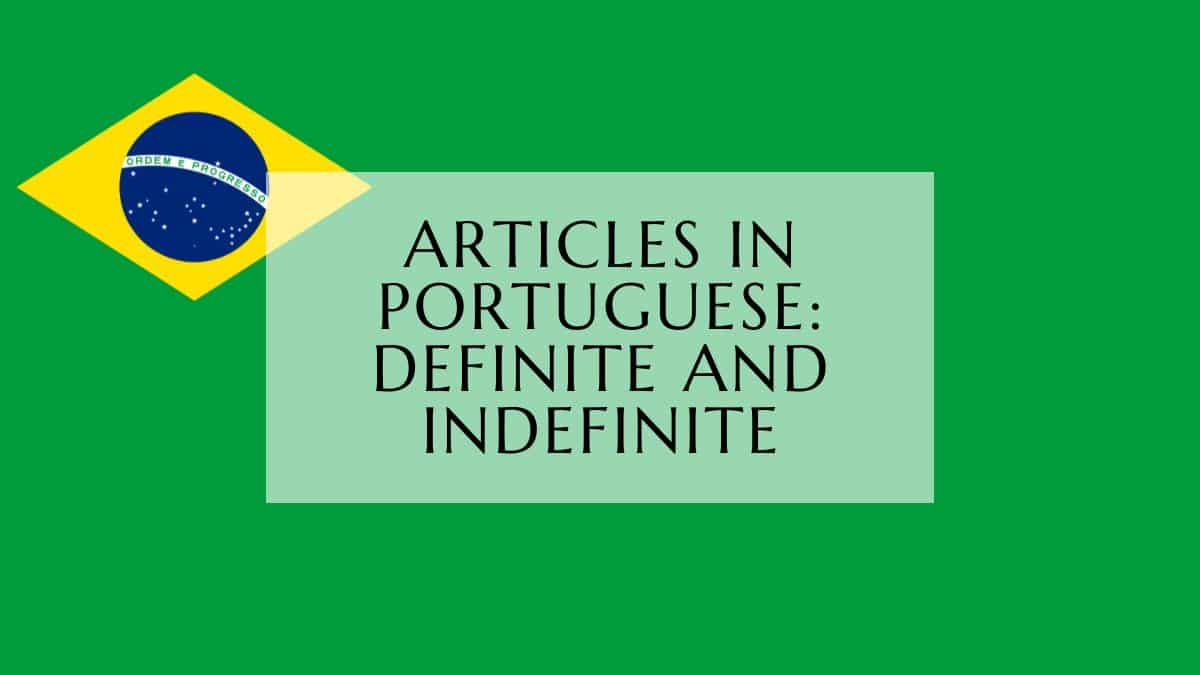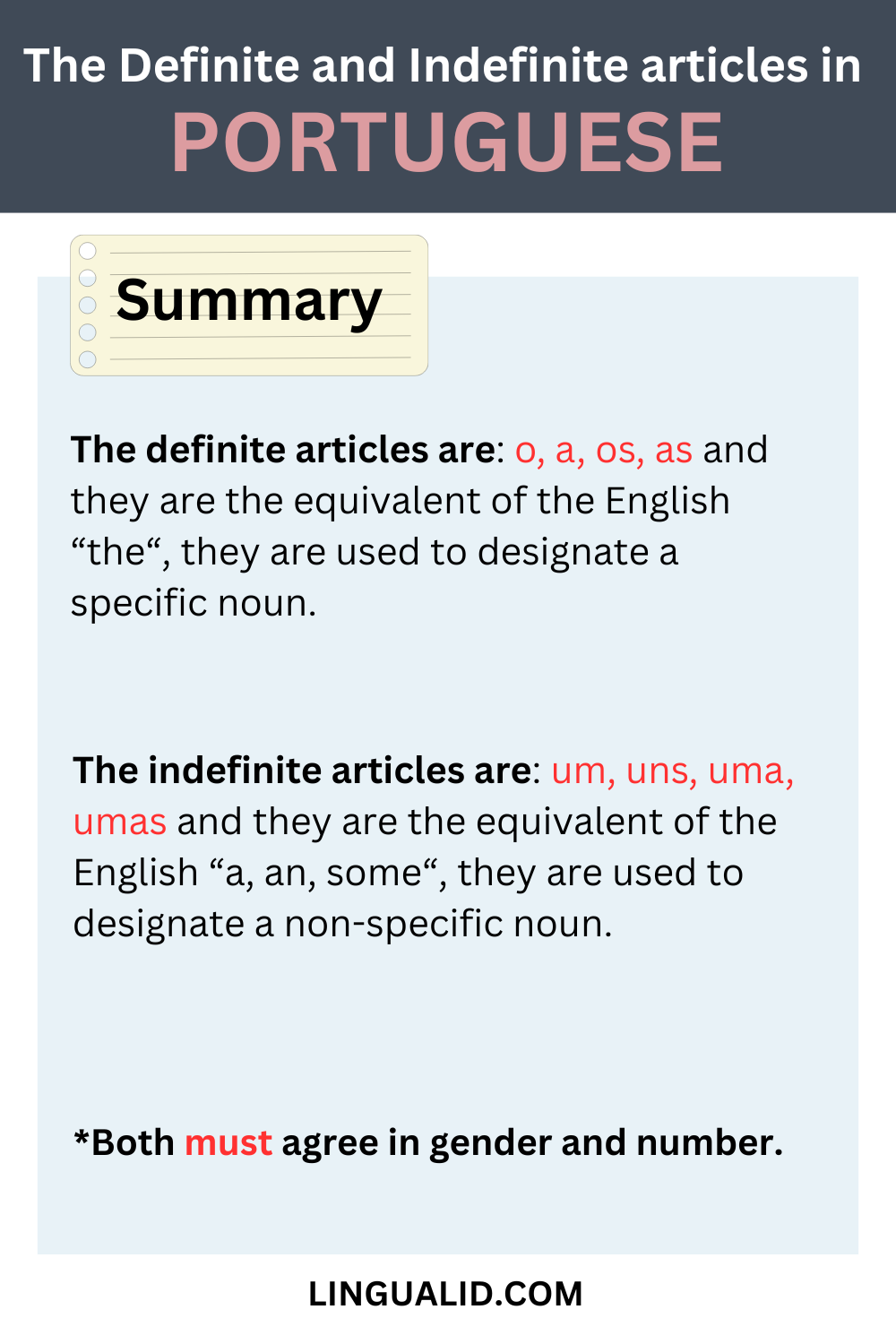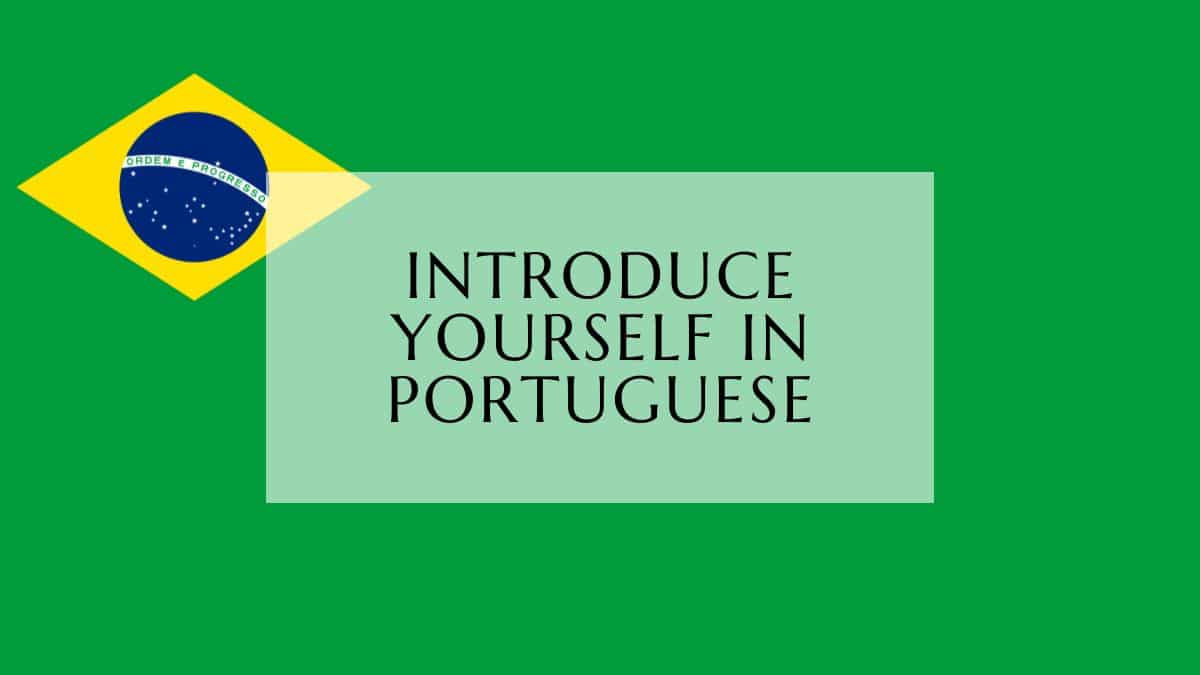In this lesson we will talk about the articles in Portuguese; definite and indefinite. with brief explanation.

Definite Articles in Portuguese
When to use the definite article
There are four definite articles in Portuguese: o, a, os, as and they are the equivalent of the English “the“, they are used to designate a specific noun (that we know or heard about before), and they must agree in gender and number.
| Masculine | Feminine | |
| Singular | o | a |
| Plural | os | as |
Example
The book – o livro
The books – os livros
The flower – a flor
The flowers – as flores
Contractions of the definite articles
This list provides the contractions between the definite articles and the prepositions (em, de, a , por):
| o | a | os | as | |
| em | no | na | nos | nas |
| de | do | da | dos | das |
| a | ao | à | aos | às |
| por | pelo | pela | pelos | pelas |
Note: you can practice what you’ve learned here, and learn how to pronounce each of the words in our Memrise course here, don’t know how to use the platform or sign up? we’ve got you covered in this easy-to-follow tutorial here.
Indefinite Articles in Portuguese
When to use the indefinite article
There are four indefinite articles in Portuguese: um, uns, uma, umas and they are the equivalent of the English “a, an, some“, they are used to designate a non-specific noun, and they must agree in gender and number.
| Masculine | Feminine | |
| Singular | um | uma |
| Plural | uns | umas |
Contractions of the definite articles
This list provides the contractions between the definite articles and the prepositions (em, de):
| um | uma | uns | umas | |
| em | num | numa | nuns | numas |
| de | dum | duma | duns | dumas |

Portuguese Definite and Indefinite Articles Review
Short-Answer Quiz
Instructions: Answer the following questions in 2-3 sentences.
- What is the main difference in how definite and indefinite articles are used in Portuguese?
- List the four definite articles in Portuguese and their English equivalent.
- Provide an example of a masculine singular noun in Portuguese and its corresponding definite article.
- What happens to the definite article “o” when it is used with the preposition “em”?
- List the four indefinite articles in Portuguese and their possible English equivalents.
- Provide an example of a feminine plural noun in Portuguese and its corresponding indefinite article.
- What happens to the indefinite article “de” when it is used with the preposition “um”?
- Why is it important to understand grammatical gender when using articles in Portuguese?
- Explain why contractions are commonly used with articles in Portuguese.
- Give an example of a Portuguese sentence using both a definite and an indefinite article.
Answer Key
- Definite articles (“the”) refer to specific nouns that are already known, while indefinite articles (“a,” “an,” “some”) refer to non-specific or new nouns.
- The definite articles are: o (the – masculine singular), a (the – feminine singular), os (the – masculine plural), as (the – feminine plural).
- “O livro” (the book) – “livro” is a masculine singular noun.
- The definite article “o” and the preposition “em” combine to form the contraction “no” (in the).
- The indefinite articles are: um (a, one – masculine singular), uma (a, one – feminine singular), uns (some – masculine plural), umas (some – feminine plural).
- “Umas flores” (some flowers) – “flores” is a feminine plural noun.
- The indefinite article “de” and the preposition “um” combine to form the contraction “dum” (of a, from a – masculine singular).
- Grammatical gender affects the form of the articles themselves, so using the correct article depends on knowing the gender of the noun.
- Contractions create a more fluid and natural sound in spoken Portuguese, and they are also common in written Portuguese.
- “O gato bebeu da água, mas ele quer um petisco.” (The cat drank the water, but he wants a snack.)
Happy learning!
Oualid Cheddadi is the founder of Lingualid, a platform that inspires independent language learners worldwide, regardless of the language they are learning. The name “Lingualid” is derived from the Portuguese word for “language,” “língua,” and the last three letters of Oualid’s name, “Lid.”



